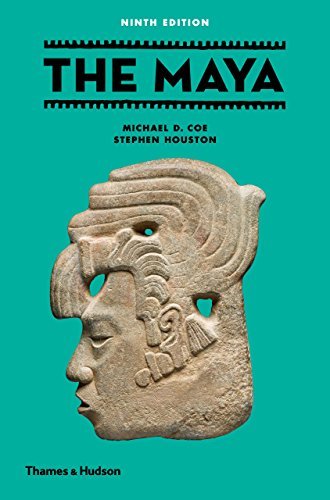What do you think?
Rate this book


"The gold standard of introductory books on the ancient Maya." —Expedition
465 pages, Kindle Edition
First published January 1, 1966
"We apologize to the Mayan people for the terrible abuses committed by individuals and national and foreign powers during the Conquest, the three centuries of colonial rule and the two centuries of independent Mexico,"
The cycle began with 1 Imix, followed by 2 Ik’, 3 Ak’bal, 4 K’an, until 13 Ben had been reached; the day following was Ix, with the coefficient 1 again, leading to 2 Men, and so on. The last day of the 260-day cycle would be 13 Ajaw, and it would repeat once again commencing with 1 Imix. An important point: scholars use Yukateko names for most of the days, a convention that does not necessarily reflect how they were pronounced in other parts of the Maya world…I genuinely don’t know if I could have worked out what it was saying had I not already known the basics.
Meshing with the 260-day count is a “Vague Year” or ha’b of 365 days. so called because the actual length of the solar year is about a quarter-day more, circumstance that leads us to intercalate one day every four years to keep our calendar in march with the sun. Although the Maya were perfectly aware that the ha’b was shorter than the tropical year, they did not change the calendar accordingly. Within the ha’b, there were eighteen named “months” of twenty days each…, with a much-dreaded interval of five unlucky days added at the end. The Maya New Year started with 1 Pop, the next day being 2 Pop, etc. The final day of the month, however, carried not the coefficient 20, but a sign indicating either its “edge of” or the “seating” of the month to follow, in line with the Maya philosophy that the influence of any particular span of time is felt before it actually begins and persists somewhat beyond its apparent termination. “Seating” also implied a placement in office.
From this it follows that a particular day in the 260-day count, such as 1 K’an, also had a position in the ha’b, for instance 2 Pop. A day designated as 1 K’an 2 Pop could not return until fifty-two ha’b (18,980 days) had passed… This is the Calendar Round, and it is the only annual time count possessed by the highland populations of Mexico, one that obviously has its disadvantages where events taking place over a span of more than fifty-two years are concerned.
Although it is usually assumed to be Maya, the Long Count was widely distributed in Classic and earlier times in the lowland country of Mesoamerica; but it was most highly refined by the Maya of the Central Area. This is really another kind of permutation count, except that the cycles used are so large that, unlike the Calendar Round, any event within the span of historical time could be fixed without fear of ambiguity. Instead of taking the Vague Year as the basis for the Long Count, the Maya and other societies employed the tun, a period of 360 days. The Long Count cycles are:
20 k’ins – 1 winal or 20 days
18 winals – 1 tun or 360 days
20 tuns – 1 k’atun or 7,200 days
20 k’atuns – 1 bak’tun or 144,000 days
Long Count dates inscribed by the Maya on their monuments consist of the above cycles listed from top to bottom in descending order of magnitude, each with its numerical coefficient, and all to be added up so as to express the number of days elapsed since the end of the last but one Great Cycle, a period of thirteen bak’tuns. the ending of which fell on the date 4 Ajaw 8 Kumk’u. The starting point of the last Great Cycle corresponded to August 14, 3114 BC (Gregorian calendar), and its ending point to December 24, AD 2012. Thus, a Long Count date conventionally written as 9.10.19.5.11 10 Chuwen 4 Kumk’u would be:
9 bak’tuns – 1,296,000 days
10 k’atuns – 72,000 days
19 tuns – 6,840 days
5 winals – 100 days
11 k’ins – 11 days
or 1,374,951 days since the close of the previous Great Cycle, reaching the Calendar Round position 10 Chuwen 4 Kumk’u. Again, to ensure consistency, scholars use labels for these units of time that do not always match those of the Classic period. The bak’tun was actually read pih or pik, and, in a switch sure to confuse modern readers, the tun was really called ha’b!